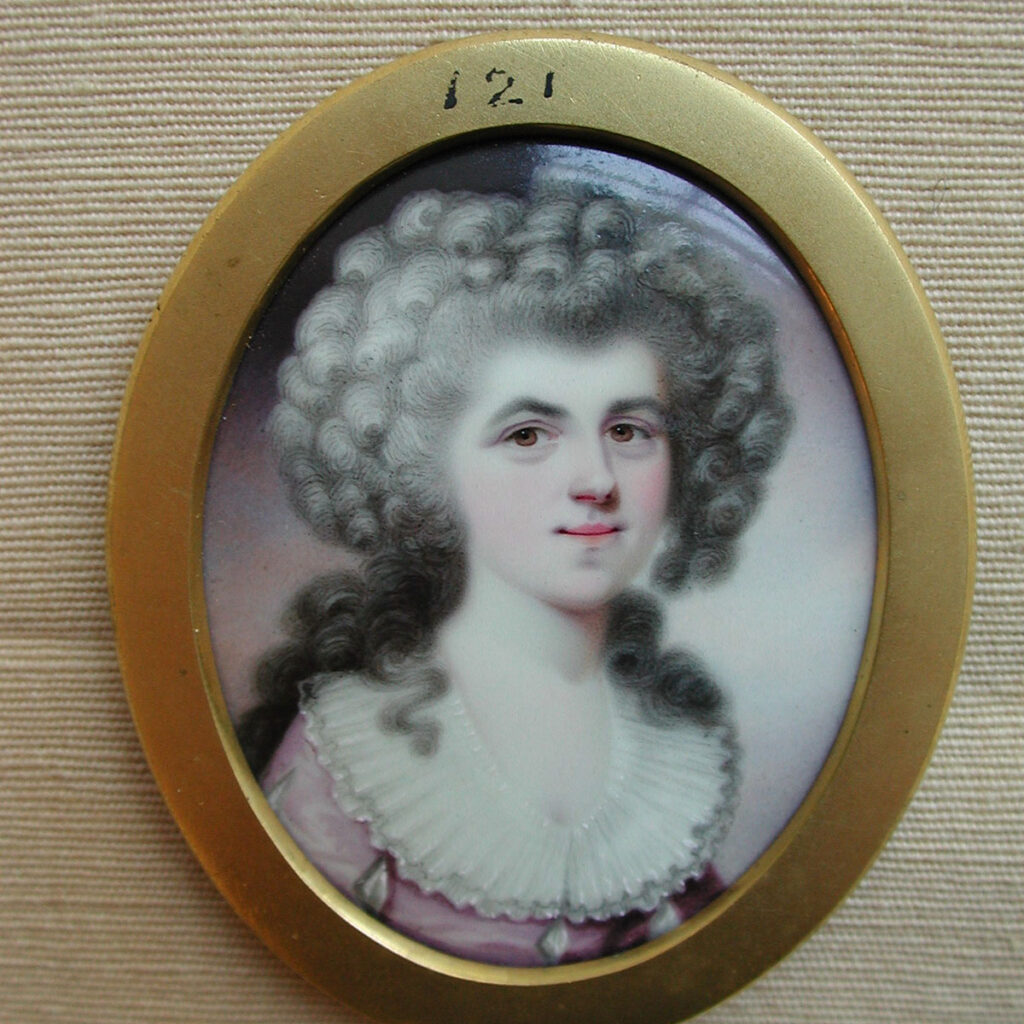Catherine Cussans (1753-1834)
Catherine Cussans (nee Holburne) was Sir William Holburne’s paternal aunt. She was the daughter of Admiral Holburne and Frances Lascelles (nee Ball) and younger sister of Sir Francis Holburne, 4th Baronet (William’s father). She was half-sister to the 1st Earl of Harewood as a result of her mother Frances’ first marriage to Edward Lascelles in 1732.
Catherine Holburne married Thomas Cussans (1737-1796) at St George’s, Hanover Square, London in 1775. He was born in Jamaica. The Cussans family were possibly descended from the de Cusance, French nobles. The first Cussans emigrated to the West Indies in the seventeenth century. Thomas was the fourth generation owner of Amity Hall, a sugar plantation at St Thomas-in-the-East, Jamaica. Educated at Westminster School and Oxford, he returned to Jamaica to run his plantations and was also a member of the Jamaican Assembly. He sold land in Jamaica in 1773, after which he presumably returned to London in order to marry.
Catherine was close to her nephew William Holburne and he stayed with her at her home at 27 Hill Street, Berkeley Square. Letters survive between Catherine, her brother Francis, and her nephews Francis (Frank) and William. The letters suggest a close and fond relationship between them. Catherine collected, amongst other things, porcelain and it seems likely that her collection played some part in shaping the tastes and interests of her nephew William.
The description on the front of the catalogue for the three-day sale by Christie’s, starting on 9 March 1835, of the contents of Hill Street following Catherine’s death gives an impression of the range of her collection (fig. XX): European porcelain including Chelsea, Dresden and Sevres; some oriental ceramic ware; a few small marbles and bronzes; and furniture and plate. William Holburne’s copy of the sale catalogue has annotations by him which appear to indicate some, if not all, of the items he successfully purchased at the sale. The annotated catalogue and some of the purchases remain in the Holburne Museum’s collection today (see below), and include John Hoppner’s portrait of Catherine Cussans.
Proceeds of the sale of Catherine’s estate went into a trust fund for William and his sisters. Presumably it was one of the factors that allowed William to collect art. After their deaths, it passed to Catherine’s sister Jean Sheldon’s descendants. When they died out around 1906 the money passed to the Trustees of the Holburne Museum. It was these funds which purchased the Museum’s current building on Great Pulteney Street. The building was built in the late eighteenth century as the Sydney Hotel, designed by Charles Harcourt Masters. It was adapted for its new use as a museum in the early twentieth century by Reginald Blomfield.
It might be assumed that at least part of Catherine’s wealth which passed to Sir William, and ultimately to the museum which bears his name, would have been from the Cussans family. However, in so far as it is possible to tell, that would appear not to be the case. Catherine’s sister Jean wrote to their brother Francis following Thomas Cussans’ death: ‘…the more I think of Mr. Cussans Will the more astonished I am… the cruel mortification must be to her [Catherine] the appearance to the world of the little consideration he has had for her…’ (AR3). Instead, Catherine and Jean were both beneficiaries of the estate of their mother Frances Ball’s sister Sarah, who married an unknown Mr Huxley and died in 1785.
As for Thomas Cussans’ money, he had co-inherited his father’s sugar plantation with his brother John (1742-77). John’s son Thomas (d.1855) was in the army and squandered the remaining plantation money. He auctioned off pictures in 1800 including works by Rembrandt and Bruegel. His younger brother John (c.1773–1861) was a comic actor, drinking club entertainer and composer of popular songs who died at sea ‘well fortified with brandy’.

